Home › Forums › Chat Forum › what size backpack for 1-2 night wild camp?
- This topic has 92 replies, 30 voices, and was last updated 7 years ago by BadlyWiredDog.
-
what size backpack for 1-2 night wild camp?
-
SpinFree MemberPosted 7 years ago
. I also carry a chunk more than half the kit.
Well that changes things a little.
I agree acehivable but at the cost of comfort and / or safety
Comfort? Perhaps a little, depends on the individual. I’m definitely not compromising on safety though.
I should qualify the ‘stuck in a rut’ comment by saying I was too until I did a mountain marathon which opened my eyes.
tjagainFull MemberPosted 7 years ago🙂
Not an angry argument – just a debate
So if you fell in a river ( as was possible on that trip we just did 3 river crossings) and get soaked to the skin without spare clothes how are you going to avoid hypothermia in freezing temps?
What do you do with your shit?
I keep reading about folks lightweight trips and adopt what ideas I can. Mrs TJ generally carrys a couple of kilo ( or more) less than me.
But I am old and I like a bit of comfort. I like to be able to sit in my chair at the campsite not having to retreat into my sleeping bag for warmth, drink a whisky, watch eagles thru my binos and take photos. I also like to be able to cook quickly and easily, drink good coffee and eat well.
You should see what we take when “comfy camping” by bike 😉
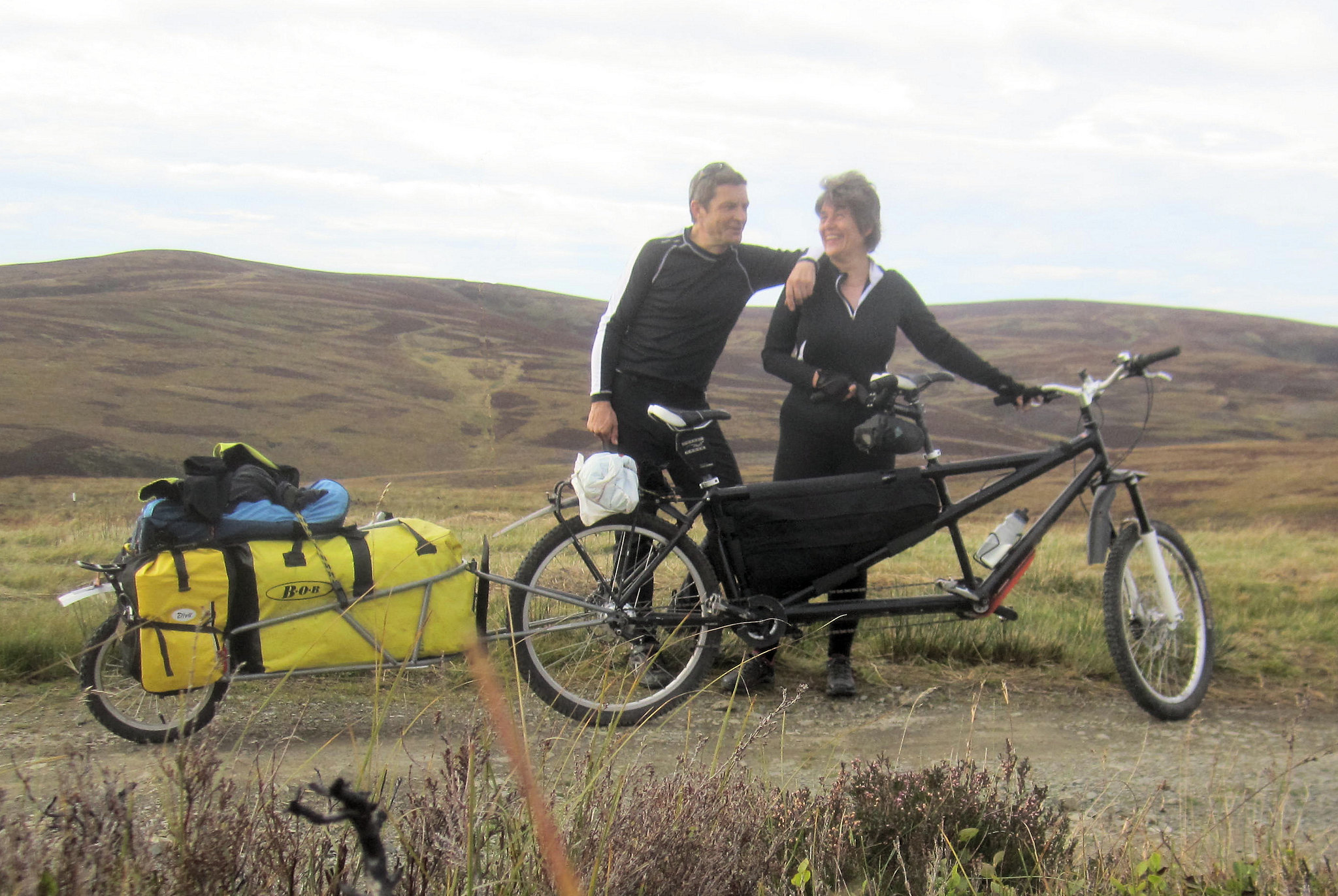 lammermuirs selfie by TandemJeremy[/url], on Flickr
lammermuirs selfie by TandemJeremy[/url], on FlickrEdit – I shall weigh the luxuries and see how much it comes to and also the basic kit – you have got me questiuoning
flowerpowerFree MemberPosted 7 years agoI use a 55l bag (montane grand tour) for multi day trips in the highlands. Could easily manage with 40 to 45l in summer.
Generally aim for under 10kg without water, although obviously in winter this is blown out with axe and crampons.
Finding a comfortable pack with some form of compression to keep your kit stable even when not rammed full would be my starting point.
EDIT – am also from a mountain marathon background (although many years ago). Really does teach you what you really need! Would admit that comfort can be compromised, but never safety.
cloudnineFree MemberPosted 7 years agoMy kit includes a trowel
Do you stop to do a bit of pointing and brick laying?
Shudder to think how much the sand and cement slows you down…
scotroutesFull MemberPosted 7 years agocloudnine – Member
My kit includes a trowel
Do you stop to do a bit of pointing and brick laying?[/quote]That’s one name for it 🙂
trail_ratFree MemberPosted 7 years agoThe one mountain marathon I did also opened my eyes.
Opened my eyes to how close to the wind alot of the guys were sailing to the wind with their safety.
The kit met the mandatory kit required but some of it was one going to be banjaxed after one use.
Like tj if in venturing into new terratory or into the hills where as he puts it the only way out if you get into a hypothermic state is a yellow taxi I’m not going to play fast and loose. Even at a mountain marathon there is a safety net if you don’t dib back in so I can understand these guys sailing close to the wind but when there’s no safety net it’s stupid.
Doesn’t take much to end up in a hypothermic state I put a foot wrong and ended up In the wrong end of the feshie at 10pm with an icy wind blowing. Never been so glad to find the bothy fire glowing as even after a change of clothes and a down jacket on I was still struggling with warming up
That would have been one misrable night with the change of clothes…and might have been lethal without a change had I made confused cold choices and been less lucky with the bothy
whitestoneFree MemberPosted 7 years agoWell I’m 58 so no spring chicken! I used to be able to get by with three sections of Karrimat shoved down the sleeve in the back of the rucksack but these days I’m soft 🙄 so have an Exped Winterlite.
A lot of my kit is quite old – I’ve a 20 year old fleece for example, I wore it to work today – so I don’t buy kit for the sake of it, I’ll cogitate* over something for ages working out how much use I’ll get out of it, etc., etc.. I’ll usually only buy something new when what I’ve got wears out or my wife says something along the lines of “chuck that in the in, it’s disgusting!”. I try and buy items that work together in ways that the result is more than the sum of their parts.
Cooking kit: the 250g kit is 100g gas canister; small burner; Alpkit 650 MyTiMug. If I want to go lighter then a homemade beer can alcohol/meths stove with foil windshield (10g). Cooking is mainly rehydrating stuff, trying to replicate cooking at home is pointless (IMHO), boil-in-the-bag type foods mean no washing up! The meths stove is slower than the gas but five minutes vs three minutes? What are you going to do with those two minutes? You are sat around chatting, it’s just that the cooking/boiling of water takes a couple of minutes longer. And yes, this is for two.
Sleeping bag: in this country in summer (basically around now until sometime in September/October depending on year) I use either a Cumulus 150 quilt or a PHD Minim 200 bag, both are rated to around 5C. I’m a warm sleeper so they are fine for me. Once it gets cool then I’ll take both and use the quilt as a wrapper, this combo is good down to -5/-6C which unless you are camping on the summit of Cairngorm in the middle of winter is going to be good enough for the UK.
River crossing: strip off as much as possible or is publicly acceptable 😳 and put it in a dry bag. When you get to the other side a micro-fibre towel will get you dry enough and you can put dry clothes back on.
@spin – coming from a climbing background we always had our sleeping mats outside the bivy bag. These days I’ll put it inside, there’s not much condensation and there’s a bit of protection from the material of the bag. For the bag/quilt combo mentioned above then with the Exped mat I need a bigger bivy bag than standard so have an Alpkit Hunka XL.
My aim generally is to move through the mountains as lightweight as possible. I’ve carried big, heavy sacks and my knees are no better for it. I’m not trying to replicate living at home but balance weight and comfort and practicality.
Once you’ve got kit for one night then really the only extra stuff for further nights is food and fuel. It looks like you are looking at *every* worst case scenario and packing accordingly. I know what’s meant by MM runners sailing close to the wind – I’m not anywhere near that.
*cogitate: (verb) to constantly prevaricate over the purchase of an item whilst muttering words to the effect of “my current model really isn’t up to standard dear, I think we should get this”.
B.A.NanaFree MemberPosted 7 years agodepends on circumstances for me, I think I’d rather do it the TJ way for a UK long weekend away, backpacking with some mates, a few comforts, change of clothes, some alcohol and pleasant food (not arsed with the binoculars tho ta).
In other circumstances I’d be cutting down to bare bones, but more because I’d be having to deal with the addition of other paraphernalia.
most aren’t doing a mountain marathon or training for one or climbing in the alps, just spending a weekend with mates enjoying the outdoors. most of the time I couldn’t give a toss about gms here and there. Stick that on your spreadsheet 🙂 😉
seftonFree MemberPosted 7 years agoLove the idea of the Aiguille stuff and I’m sure it would last for ever. But I like the look of some of the more ‘modern’ bags. especially with a front face of the bag that zips open (as opposed to one opening at the top)
haglofs
gregory
osprey
bergansthinking 65ish would be a good idea? 1-2 night camp lake district – spring/autumn
footflapsFull MemberPosted 7 years agothinking 65ish would be a good idea? 1-2 night camp lake district – spring/autumn
I used to use 50l with the carrymat strapped to the outside and that’s in winter.
Long time since I did any back packing though, so stuff will be lighter and smaller now…
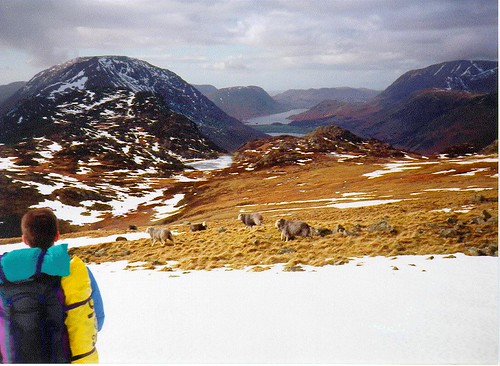 RED PIKE FROM BRANDRETH by Ben Freeman[/url], on FlickrscotroutesFull MemberPosted 7 years ago
RED PIKE FROM BRANDRETH by Ben Freeman[/url], on FlickrscotroutesFull MemberPosted 7 years agoThe problem with getting a rucksack that’s too big is that the load can slip down to the bottom, upsetting the balance and making it uncomfortable. You can minimise this so some extent if there is a divider and/or compression straps but these then make retrieving items whilst on the go a wee bit more hassle.
+1 to all of that, but I’m sure you wouldn’t claim that other folks weights are unrealistic if they’re specifically attacking the light/fast option. Also, race or not, a lighter pack is just more pleasant to carry.
whitestoneFree MemberPosted 7 years agoHere’s my bike from a recce of the northern loop of the HT550 on the May Day bank holiday, the shot was taken between Glen Golly and Bealach Horn. We bivvied in the woods at the foot of the descent from the bealach.

I didn’t have a rucksack. The blue bag on the front has Alpkit Rig7 tarp, Exped mat, Hunka XL bivy bag, Cumulus 150 quilt and PHD sleeping bag. Spare clothes in the seat pack, poles for tarp, powerbank battery, food (for two nights), stove and mug in the partial frame bag. Tools spares, emergency stuff in the bag beneath the downtube. Trail food in the two grey feed pouches behind the blue bag and in the Lioness on the front (hard to see because it’s black). The Lioness also had stuff like water filter, cables and light. No firm idea of the total weight but it was probably about 8Kg. Just sensible packing really.
We weren’t slumming it though we didn’t have any whisky with us 🙁
Here’s a shot of the bike in ITT mode for the Trans Cambrian Way in March.
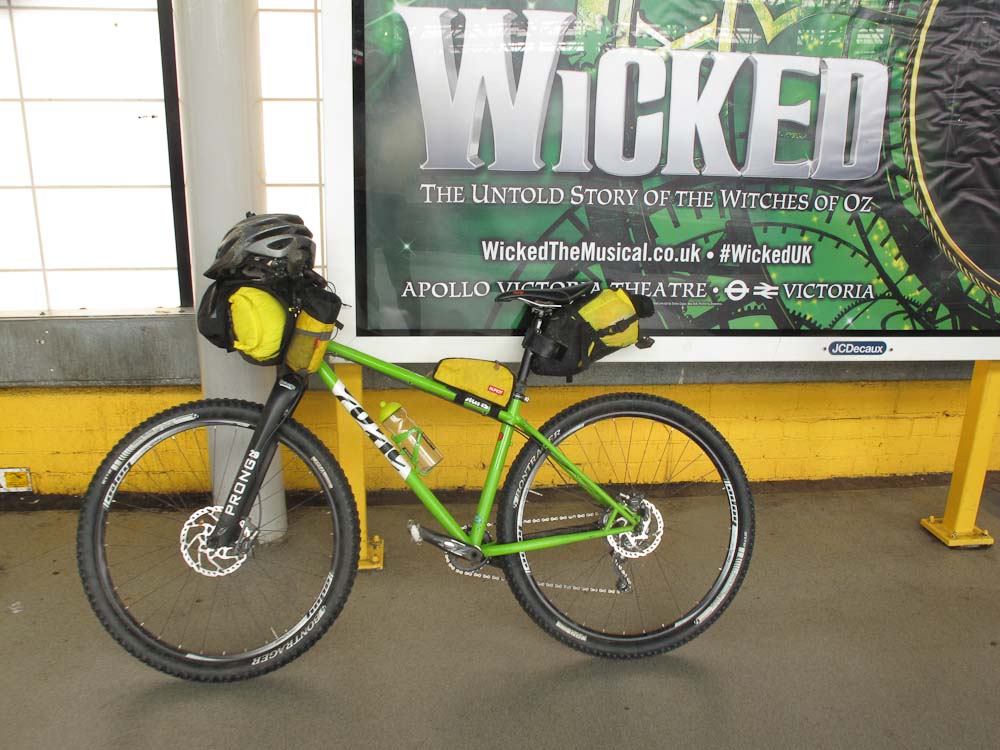
Basically no frame bag and the spares are in the top tube bag rather than one under the downtube as I didn’t have that bag back then.
B.A.NanaFree MemberPosted 7 years agoPHD is cheating anyway, I bet it’s no bigger than a tube of toothpaste and weighs less. Most people have to make do with a normal stuff at normal prices. 🙂
whitestoneFree MemberPosted 7 years agoHa, ha! I know what you mean, there’s no denying it’s pricey stuff. I got that bag in their spring sale a couple of years ago so not quite such a shock, £170 from memory, definitely an investment rather than a simple purchase. The Cumulus kit is decent stuff though (the bags are sold under the Criterion label in the UK), not quite as good as PHD but quite a bit cheaper. I suppose they sit somewhere between Alpkit and PHD in both price and quality.
B.A.NanaFree MemberPosted 7 years agoIn my case, ME Dewline and still going strong.
footflaps, that looks like the colour of a Karrimor Alpinist?
aracerFree MemberPosted 7 years agoYes, but the one I carry weighs next to nowt, plastic thing with the handle cut off.
I also as above simply do not believe the weights some folk claim. I included everything including 2 walking poles – thats 500g.
Which is one reason why others think you’re carrying too much – those weights are real and achieved by being obsessive about everything. I don’t carry walking poles even when walking – I understand why you do, but then it’s more added weight.
You say your stove is only 250 g – Including pots big enough for two?
Mine weighs way less than that – two people just requires a bigger foil takeaway container. The cooking kit is a relatively small part of it, but illustrates the level of obsession – I use solid fuel as it gets rid of wasted weight in containers. Here’s my stove:

Top bit is a steel can as I found the alu coke can used for the bottom couldn’t take the heat. The same as whitestone I’m just boiling water on the stove to add to dehydrated food – menu usually starts with a pot noodle or pot pasta, which then provides the “bowl” for all other courses. Cooking/eating utensil is a plastic spork.
My suggestion of a 25L pack is the minimum for MM level of kit – could probably get it all in a 20. If I’m going longer and/or worse conditions (though bear in mind KIMM/OMM is at the end of October and I’ve been out in pretty rough conditions in that) then I might carry more spare clothing in which case maybe a 30L pack. Have done hut to hut ski touring in Norway with a 45L pack – no cooking equipment or tent but that doesn’t make a huge difference, and was certainly carrying plenty of clothing given expected temperatures down to -20, though a down jacket is a lot lighter than fleece for the warmth rating. Also skins, snow shovel and waxes. I own a 65L pack but it hasn’t been used in over a decade – I’ve moved on from carrying lots of stuff, it’s far more fun if you’re not weighing yourself down.
footflapsFull MemberPosted 7 years agofootflaps, that looks like the colour of a Karrimor Alpinist?
No, that photo is from before that came out. It’s a Hard Rock IIRC 50litre thing. They had a set Hard Ice, etc at 30l, 40l and 50l. These were two tone with the back a different colour to the sides. The Alpiniste was all the same Karrimor purple.
tjagainFull MemberPosted 7 years agoJust had my new chair arrive – a 75g saving.
Looking at a down jacket to replace one of the fleeces.
I have a ti spork. Nicer / lighter than plastic
I need the walking poles – dodgy knee. I am looking at CF ones to save some weight
Aracer – could you live using that stove / cooking equipment for 12 days?
molgripsFree MemberPosted 7 years agoIt’s not a competition! TJ can take 13kg of stuff if he likes. To be honest when I’ve camped out on foot I take more because I can, and it doesn’t bother me that much. It does on the bike though so that’s where I try to cut down. I’d probably do the same as him – it’s nice to be able to change clothes, and if I were walking I’d probably bring them for luxury and because I own a nice 60l pack.
So if you fell in a river ( as was possible on that trip we just did 3 river crossings) and get soaked to the skin without spare clothes how are you going to avoid hypothermia in freezing temps?
I’ve been wet many times, I just press on and I warm back up again in no time, because I am wearing kit that is warm when wet. Only risk is falling in and becoming too injured to press on – but then I’d be in the survival blanket or whatever and keeping warm that way.
tjagainFull MemberPosted 7 years agoInteresting discussion. Glad trailrat understands my point about the risks and the circumstances under which I as camping. Molgrips – where we were get wet get hypothermia without dry clothes
aracerFree MemberPosted 7 years agoer, nope – have just weighed my plastic one and it’s 9.86g (yes I have a scale that accurate!) – though for a MM I’d probably take a disposable spoon, the sample I have here is 2.72g. Not even sure about nicer. The ti thing is a good example of where people think something is light when it isn’t – a quick google suggests a ti spork is ~15g. A general theme with ti stuff which seems to have got a reputation for being ultralight – Trangia pans are lighter than typical titanium ones.
Aracer – could you live using that stove / cooking equipment for 12 days?
Possibly not, but then the OP is looking at doing a 2 nighter. On a longer trip I’d probably take a superlight gas stove, but that still weighs way less than a jetboil.
I do get where you’re coming from, and would carry more for the sort of trips you’re doing – though still a lot less than you are (I’d be aiming for the 45L pack). The thing is though, the sort of trips most people do when they’re talking “wild camping” are just 1-3 day trips where you can get away with minimal kit.
tjagainFull MemberPosted 7 years agoI did post some of this when sleep deprived on night shift so not as coherent as I might have been. I am still running with a bit of a misfire 😉
the 13 kg contains a kilo or two extra as I carry a bit more than mrs TJ, it also contains a kilo or two of luxuries, and a kilo or so so that if I run into difficulties I can be safe not have to rely on the big yellow bird to rescue me. No phone signal for large parts of the walk
So take away the luxuries and the bits I am carrying for mrs TJ then down to around 10 kilos ( including rucsac and poles) Take away my safety margin then well under 10 kilos, take away my comfort and whisky down to 7-8 kilos ish
whitestoneFree MemberPosted 7 years agoTJ – all fuel types have pros and cons, it just depends what your priorities are. I’ve petrol, gas, meths and paraffin stoves that I can use – fifty years of camping and I’ve built up a collection!
For sheer heat output and for use in very cold conditions then petrol. For absolute ease of use then gas.
For simplicity, ease of transport of fuel then meths.
(Not used the paraffin stove in years)There was a survey done on one of the US long distance trails about stoves, the only one that was 100% reliable was the homemade soda/beer/pop can stove.
The meths stove can be a bit of a faff and it takes a little getting used to but once you know how much to use to boil say 500ml of water then you can estimate fairly accurately how much you’ll need for a day/week/whatever. Since it doesn’t need pressurising you don’t need super strong containers as with gas and petrol. It’s just a heat source at the end of the day.
Meths stoves don’t work very well at low temps – you need to warm both stove and fuel up before you even begin to think about starting it up, but this is just a matter of shoving both into a pocket or inside your jacket for a few minutes. They don’t like wind either so a windshield is essential.
I’d be happy to use a meths stove for a 12 day trip so long as the temperatures were above freezing.
whitestoneFree MemberPosted 7 years agoBut if you are going to cross a river where there’s a risk of submersion then you are better stripping down to your underwear and keeping your clothes in a dry bag. If the weather is intemperate then just put your waterproof shell back on. You aren’t going to get hypothermic in the time it takes to cross the river.
rene59Free MemberPosted 7 years agoI just carry my knife. I can make everything else I need using just that and my surroundings. It’s the ultimate ultrasuperlight setup.
kcalFull MemberPosted 7 years agostill have my replacement Alpiniste in the garage (original got nicked).
And a Hot Ice (IIRC) 25l/30l day sack with axe straps.bomb proof. faded / not faded pattern on lid cover from straps 🙂
B.A.NanaFree MemberPosted 7 years agoNo, that photo is from before that came out
You must be older than you look 🙂
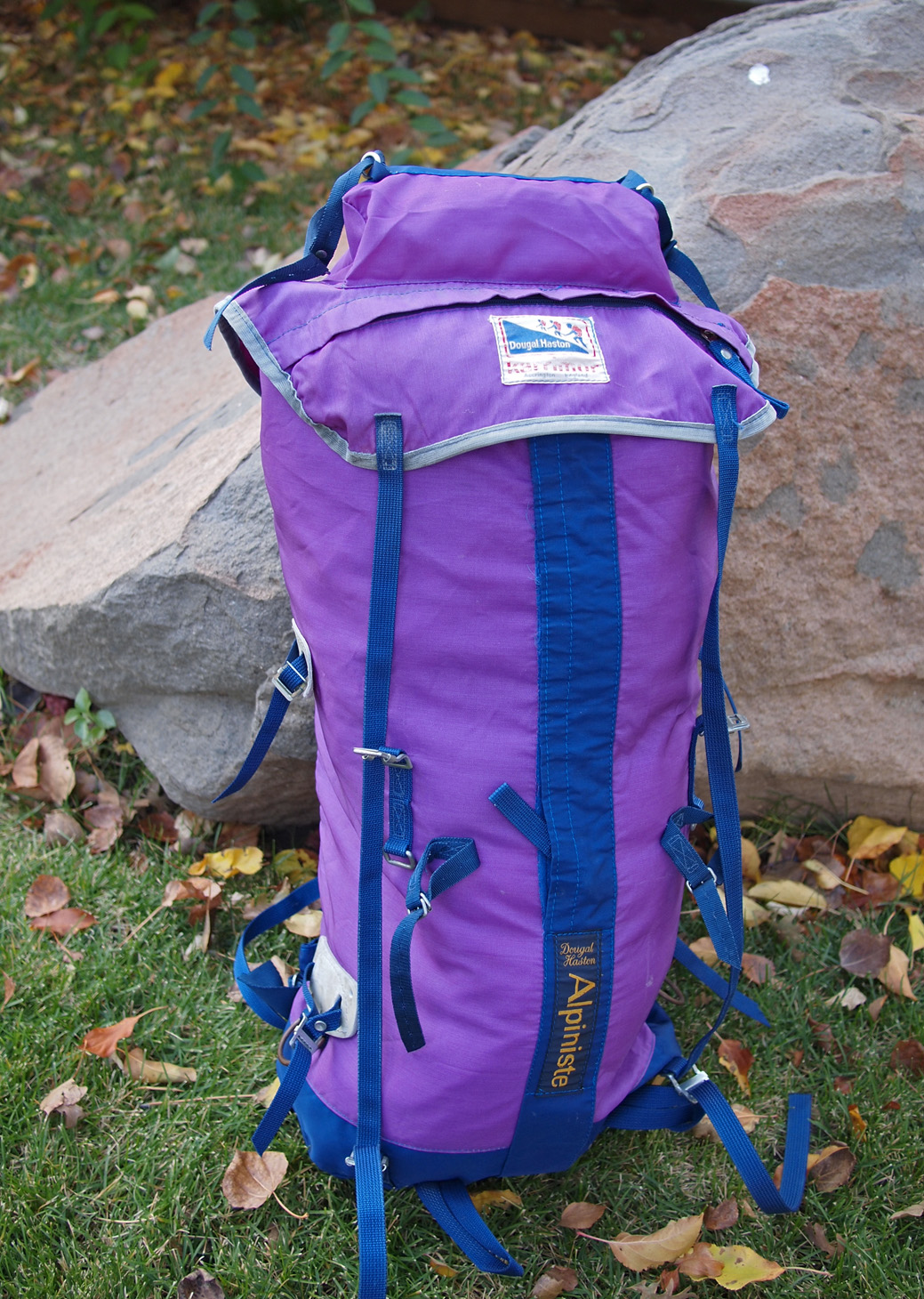 tjagainFull MemberPosted 7 years ago
tjagainFull MemberPosted 7 years agoOn stoves – I have used loads of different one – the jetboil is my fave for a variety of reasons partly due to its efficiency – less fuel needed thus a weight saving – half the fuel per day compared to a pocket rocket and partly due to the fact that for an extra 8 grammes I get an french press for my coffee and partly down to the sheer convenience of the thing
Optimus petrol burner was the hottest.
molgripsFree MemberPosted 7 years agoMolgrips – where we were get wet get hypothermia without dry clothes
Why? You’re under your windproof shell, aren’t you? I’ve been very wet and very cold many times all over the country – I’m not new to this. I disagree that hypothermia is inevitable with the right clothing.
If you aren’t adding new water to the system and you are protected from wind driven evaporation, then the water in your clothes warms up.
footflapsFull MemberPosted 7 years agoYou must be older than you look
OK, different version, I was thinking of, which was mid 90s IIRC.
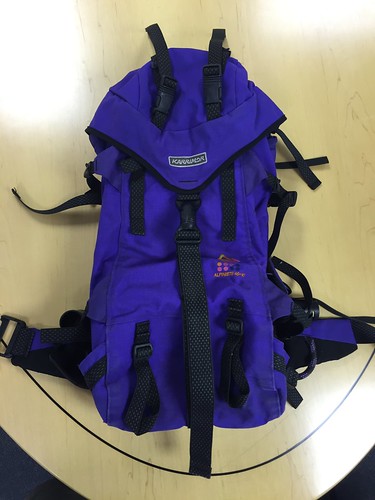 Alpinist 45+10 by Ben Freeman[/url], on FlickrscotroutesFull MemberPosted 7 years ago
Alpinist 45+10 by Ben Freeman[/url], on FlickrscotroutesFull MemberPosted 7 years agoReady for Buachaille Etive Mor in the morning (a mate is Compleating)

Edit: and I’ve just knocked 200g off the bike by setting up the front tubeless (the rear already was)
bobloFree MemberPosted 7 years agotjagain – Member
Looking at a down jacket to replace one of the fleecesHave a look at a Primaloft pullover instead of down. Less troubled by damp than down and nearly as light/compact. It’s probably the most used, most flexible bit if kit I’ve got and when you compare it to the weight and bulk of fleece… Obv assuming carrying whilst on the move rather than wearing as it’d have to be seriously cold to wear whilst generating heat…
On the stove front, I’ve taken to using a Micro Rocket/100g gas/reactor type pot. The pot uses about 30% less gas than a normal one which is a key point particularly if resupplying is limited or you’re out for a few days on the trot.
TJ, where are you going that you’ll have no contact, any shops etc for 12 days? That’s a pretty remote trip…
footflapsFull MemberPosted 7 years agoI have one of the old KIMM sacks, the larger “45l” one
I never understood why they made those as 45l is getting pretty large for a KIMM, 25-30l is all you need and the Elites are more like 15-20l (but they sleep in a bin bag and only carry one spare sock).
tjagainFull MemberPosted 7 years agoAs I said – not firing on all cylinders due to shift lag from nights so not too clear
the 4 day trip that I just went on had no contact – that was in strathconnan
the 12 day trip next week will have two places for resupply – poolewe and torridon – neither has a lot in the way of shops. Can’t carry 12 days of food. Will be sending parcels to get picked up in both places
scotroutesFull MemberPosted 7 years agoYou may see the HTR550 folk coming through- it starts on Saturday 26th so the fast folk should be in the area on Monday?
tjagainFull MemberPosted 7 years agoOh – I’ll have to check the route and look out for them. Better take extra jelly babies for them I guess – do HTR 550 people eat jelly babies or only hi tech stuff? 😉
whitestoneFree MemberPosted 7 years agoNo outside help allowed! Maybe. We’re allowed to use any facility available to anyone who rides the route at any time not just the group start. The rules are here[/url] The route doesn’t go out to Poolewe any more but cuts through to Letterewe House and follows the old Postman’s Path to Kinlochewe. The bit through Torridon is different as well – it doesn’t go to Torridon village but cuts up by the Easan Dorcha bothy. Rich Seipp who occasionally posts on here is currently doing it with his lad, Minipips – linky
Some eat gels and the like, I’m not going to bother, they don’t sit well on the stomach after a while. I might have one or two in the pack just incase I need a lift towards the end 😆 Jelly babies are fine – just packed a bag – along with chocolate, flapjack and more chocolate!
Have just finished packing bags and setting up the bike for tomorrow’s JennRide, total weight of bike, bags, gear *including food and water* is 18.5Kg. The bike itself is 11.5Kg. I’ll probably go with something similar for the HT550. It definitely isn’t comfort but it’s enough to be safe. There’s some extra stuff in there, not so much “just in case” but to get a feel for the weight if I need more next week.
The topic ‘what size backpack for 1-2 night wild camp?’ is closed to new replies.
